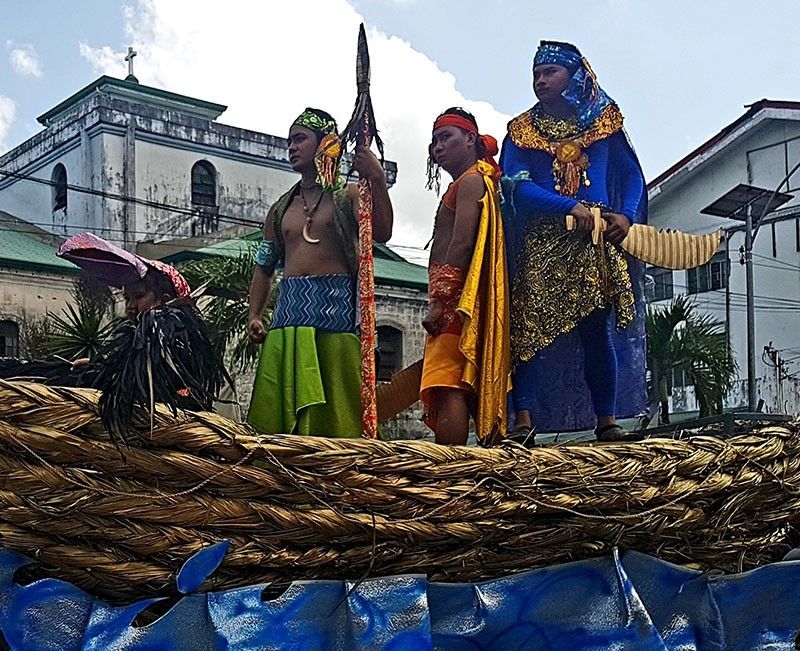Legazpi’s living legend

Every nation around the world, including the Philippines, has an epic or legend it can take pride in as a reflection of the cultural identity of its people. These age-old stories are often immortalized in books and handed down from one generation to the next.
MANILA, Philippines — In Legazpi City situated at the foot of the iconic Mayon Volcano in the Bicol region, its epic does not remain in books, but has been living in the streets for the past 27 years through an annual extravaganza called the Ibalong Festival.
The region’s biggest non-religious festivity, it is based on folklore and is perhaps the country’s only cultural event which relives an epic rescued from the dustbin of history.
The Ibalong is a contemporary recreation of fragments of a mid-19th century 60-stanza epic poem penned by Franciscan friar Bernardino de Melendreras inspired by Bicol’s rich precolonial heritage.

Written in the mold of ancient mythologies, Ibalong begins with an old man named Kadunung, a wandering minstrel in prehistoric Bicolandia who narrated the epic to the young children. Its main characters are superhuman heroes – Baltog, Handyong and Bantong – who rid the land of fearsome beasts and helped it attain its golden era.
Arriving at various ages in history, these mythical warriors from a faraway land vanquished the dreaded creatures which sowed terror among the populace – the giant wild boar Tandayag and half-man, half beast Rabot.
Another prominent character is the villain-turned-heroine Oryol, a beautiful half woman-half serpent, who had a change of heart as she fell in love with Handyong and joined him in defeating the monsters.
The three legendary heroes cultivated the land and established systems in agriculture, government and navigation, a syllabary, which was followed by an age of discovery and invention which helped the civilization flourish.

After recounting their exploits, Kadunung suddenly stopped his narration and promised to resume telling the story at another time. Many history scholars believe that the epic was designed to be an unfinished story, to make it a living legend where the readers can freely continue the saga with their own interpretations through modern-day versions and acts of heroism.
Ibalong got into mass exposure in 1895 when editor Wenceslao Retana compiled and annotated its fragments in the book Archivo del Bibliofilo Filipino. While the original Spanish manuscripts were lost, what exists is the portion copied by Fray Jose Castaño and included in the Bibliofilo of Retana published in Spain.
The title was given by prominent essayist and propagandist Jose Ma. Panganiban of Camarines Norte in reference to Tierra de Ibalon, the moniker given by the Spaniards to the region.

Most of the places mentioned in the narrative trace their roots to the present-day province of Camarines Sur, but it was the city government of Legazpi through the late mayor Imelda Roces who inaugurated the festival in 1992 to pluck it from oblivion and make it a source of pride for all Bicolanos.
It was later adapted in 2013 as a dance musical by Tanghalang Pilipino and playwright Rody Vera at the Cultural Center of the Philippines.
According to Mayor Noel Rosal, the Ibalong Festival brings to the fore Bicol’s rich heritage and resilient character amidst adversities and calamities, such as frequent typhoons and eruptions of Mayon Volcano, the most recent of which was in February this year.
He said that in transforming a forgotten legend into a colorful pageantry, the city has put a visual touch to make the epic better understood by the people. The focus of the two-week street festivity which reenacts the important scenes of the epic is a theater parade along Legazpi’s main road.

This year, Ligao National High School of Ligao City, Albay romped off with the overall championship in the contest and top honors in the exhibition, costume and props and warrior princess contest categories.
In addition to the usual street dancing, the epic is also taught in schools, produced as popular literature and reinterpreted in theater plays and shows for the duration of the festival.
Rosal concludes that the annual Ibalong Festival is a unique opportunity to showcase the city’s strides in tourism, economic development and governance, especially with its recent award as the country’s overall most competitive component city in the 2019 Cities and Municipalities Competitive Index of the Department of Trade and Industry.


















